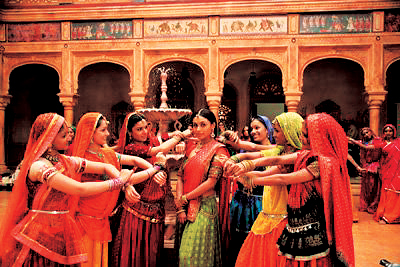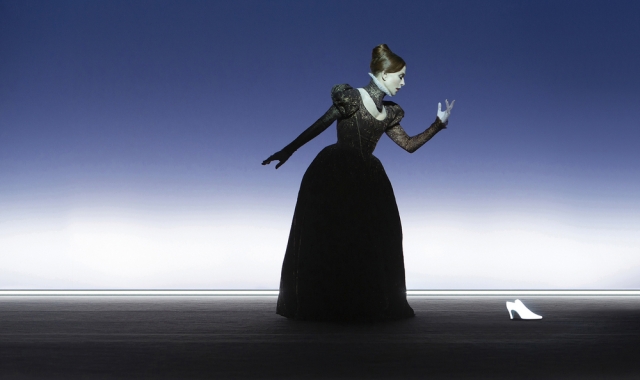
기침, 감기나 다른 질환들과 함께 12월에는 영화비평가들 사이에 이상한 계절병이 도진다. 바로 ‘올해 최고’의 리스트들이다. 이런 것이나 비평가협회에 투표하는 걸로 만족하지 않는 몇몇 동료들은 자신의 리스트를 만들어 주소록에 있는 모든 이에게 이메일을 보내곤 한다. 이들 중 몇개는 비평가에게 합당하지 않은 다양성의 결핍을 드러내어 읽는 것이 난처할 정도다(대부분 미국영화에 다른 나라 작품 두개 정도를 더해 만든 리스트). 다른 리스트들은 흥미롭게도 비 미국영화 대부분이 서구 시장에 얼마나 더디게 진입하는지를 보여주기도 한다.
그런데 몇몇 비평가는 리스트 만들기에 한술 더 떠 그들이 본 영화들을 가지고 좀더 넓은 의미의 메시지를 추론하려 든다. “올해는 영화에 있어 좋은 해였나?”라고 묻는다. 도대체 그것을 어떻게 안단 말인가?
나는 결코 세계영화에 “좋고” “나쁜” 해가 있다는 생각에 동의하지 않는다. 영화제 작품 선정자들은 자기 프로그램이 비판받을 때 이런 것으로 핑계 삼기를 좋아한다. “흠, 올해는 정말 형편없는 해였어. 남미나 스칸디나비아, 동유럽에선 건질 게 하나도 없었어. 어쩌고저쩌고….” 심지어 칸 전집행위원장 질 자코브도 나에게 영화도 포도주와 마찬가지로 “양질의 수확기”와 “비양질의 수확기”가 번갈아 온다는 의견을 말한 적이 있다.
세계영화의 근황에 대해 화려하고 시적인 금언 만들기를 좋아하는 자코브에게는 이런 말이 아마도 사실이었을 것이다. 그는 영화에 대한 작가주의적 관점에 전적으로 동의했다. 그리고 작가들이 2년 연속 무더기로 나타나는 일은 흔치 않은가. 그러나 세계영화에 대해 좀더 융통성있는 생각을 가진 사람이라면 자코브의 말은 완전 난센스다.
개별 국가의 제작물은 해마다 달라질 수 있다. 그리고 외적 요인들(전쟁, 정치, 경제 등)은 개개의 제작을 무산시킬 수도 있다. 그러나 전체적으로 봤을 때 세계영화는 변화무쌍하고 지모가 풍부한 머리 여럿 달린 괴물과도 같아서 평론가와 영화제들이 부과하려는 취향의 분류 유별화에 침식되지 않는다. 맨날 같은 바위 밑에서 영화를 찾는다면 몇몇 해에는 반드시 실망할 수밖에 없을 것이다. 맨날 같은 영화를 바위 밑에서 찾는다면, 영화가 계속 진화하면서 같은 것의 공급이 지속적으로 감소하는 걸 보게 될 것이다.
그렇다면 과연 어떤 기준으로 한해 영화제작이 잘되고 못 되었다는 것을 평가할 수 있을까? 비평의 기준이나 예술성에 대한 절대적 잣대는 없단 말인가? 한 가지만은 유일하다고 말할 수 있다. 뒷목의 털, 그것은 바로 영화의 모든 요소가 응집되어 마법의 순간을 이룰 때 목덜미에서부터 척추를 타고 내려오는 짜릿한 느낌 말이다. 범주를 뛰어넘는 것이고, 지적으로 분석이 안되는 반응이다. 그리고 내가 가장 신뢰하는 척도다. 일년에 12번 정도 느끼게 되는데, 영화의 국적들만 다르다.
올해 ‘짜릿한 순간들’은 다음과 같은 장면들이 포함됐다. 아몰 팔레카 감독의 <파헬리>에서 한 조연인물의 슬픔이 중간에 삽입된 파라 칸 안무의 매혹적인 팔찌 춤 장면, <오만과 편견>의 화려한 중심 무도회에서 카메라가 각방의 배우들을 이어 보여줄 때, 복잡하지 않았던 시절의 모험과 스릴에 찬 영화들을 상기시키는 라세 할스트롬 감독의 <카사노바>의 즐거운 마지막 장면, 배를 한대 얻어맞은 것 같은 느낌을 주는 두기봉 감독의 <선거>에서 거의 결말쯤에 드러나는 놀라운 반전, 그리고 2시간짜리 세련된 여흥을 너무 자신감있게 알리는 <친절한 금자씨>의 오프닝 타이틀.
그러니까 리스트는 때려치우자. 내 짜릿한 순간들은 발리우드나 영국, 미국, 홍콩, 한국영화에 대해 작년과 비교한 상황이 어떤지 알려주는 건 별로 없다. 그렇지만 세계영화가 여전히 놀래주고, 기분을 북돋워주고, 충격을 던져줄 힘이 있다는 것은 보여준다. 그리고 어쨌든 그것 이상을 바라는 것도 아니다.
Along with coughs and colds and other ailments, December brings a strange seasonal disease among film critics - best of the year lists. Some colleagues, not content with voting in this or that critics' association, also compile personal lists and e-mail them to everyone in their address book. Some make embarrassing reading, showing the lack of variety in the critic's diet (generally, U.S. movies plus a couple from other countries); others, interestingly, show how slow most non-U.S. cinema is in penetrating western markets.
However, some critics take list-making one step farther, trying to extrapolate a broader message from what they've viewed. "Was it a good year for cinema?" Well, what the hell do you know?
I've never subscribed to the idea that there are "good" and "bad" years in world cinema. Festival selectors love to use it as an excuse when their programme is criticised: "Well, it was a very poor year: nothing from Latin America, Scandinavia or East Europe, blah blah blah..." Even former Cannes artistic director Gilles Jacob once opined to me that cinema, like wine, fell into alternate "vintage" and "non-vintage" years.
For Jacob, who loved to construct grand, poetic maxims on the state of world cinema, it was no doubt true. He subscribed totally to the auteurist view of cinema - and auteurs rarely show up en masse two years running. But for anyone with a more flexible view of world cinema, Jacob's saw was pure nonsense.
Individual countries' output can vary from year to year; and external factors (war, politics, economy) can decimate individual production. But world cinema as a whole is an ever-changing, resourceful and many-headed beast that resists the taste categorisation that critics and festivals like to impose.
Look under the same rocks for films, and you're bound to be disappointed some years. Look for the same films under rocks, and you'll find an ever-decreasing supply as cinema continues to evolve.
So, by what criteria can a year of filmmaking be judged good or bad? Is there no fixed mean of criticism, no absolute scale of artistry? I would argue there is only one - the hair on the back of your neck.
It's that prickly sensation that runs from the nape of your neck and down your spine when all the elements of a film gell in a magical moment. It's a response that crosses categories and defies intellectual analysis, and it's the barometer I trust most. I get it about a dozen times a year; only the nationalities of the films differ.
My "prickly moments" this year include the dazzling, Farah Khan-choreographed bangles number in Amol Palekar's "Paheli," with its midway cutaway to a supporting character's sadness; the lavish main ball in "Pride & Prejudice," where the camera engages with the actors from room to room; the joyful finale of Lasse Hallstrom's "Casanova," which harks back to an uncomplicated age of swashbuckling movies; the surprise twist near the end of Johnnie To's "Election," which hits you like a punch in the stomach; and the opening titles of "Sympathy for Lady Vengeance," which announce two hours of sophisticated entertainment with so much confidence.
So, nuts to lists. My prickly moments don't tell me much about the state of Bollywood, British, U.S. Hong Kong or South Korean cinema compared with last year. But it tells me world cinema still has the power to surprise, exhilarate and shock - which is all I want it to do, anyway.






